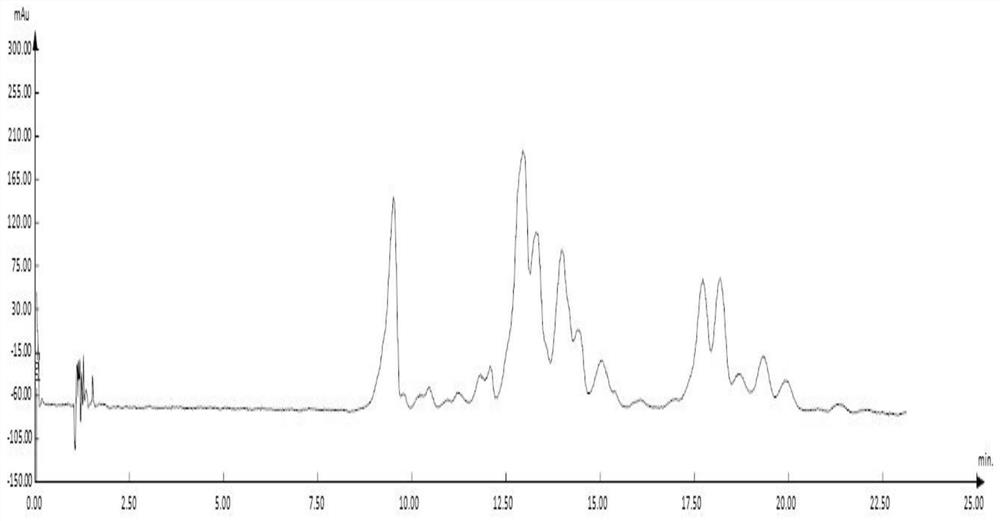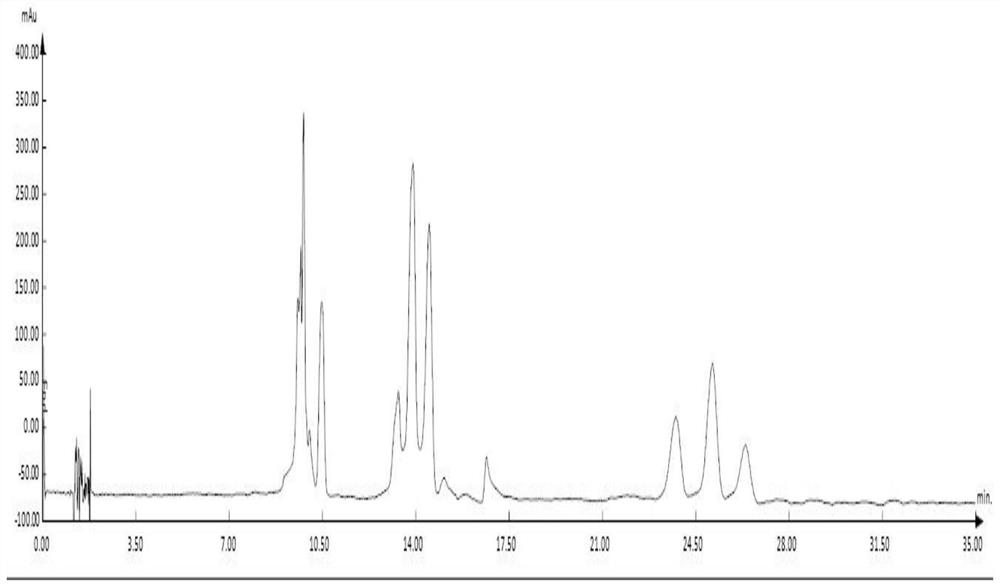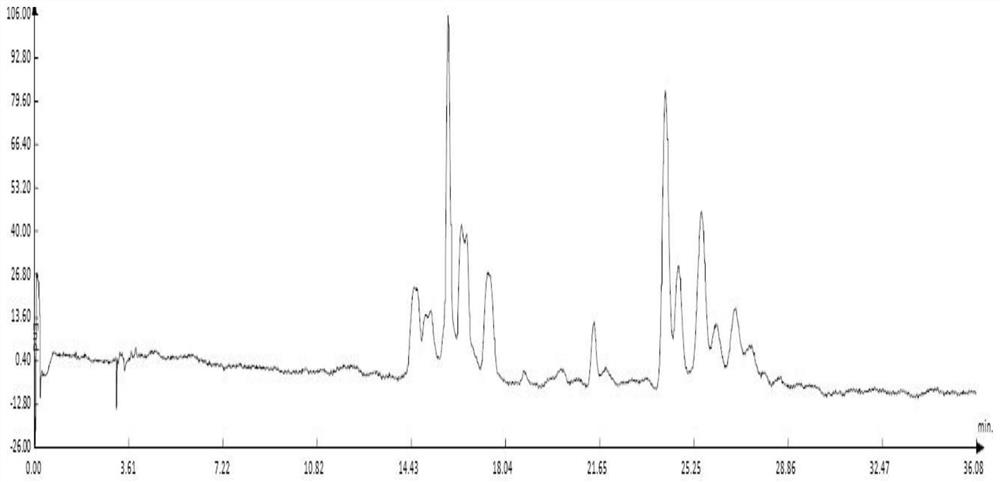Method for separating zeaxanthin and canthaxanthin in carotenoid through supercritical fluid chromatography
A technology of supercritical fluid and carotene, applied in separation methods, chemical instruments and methods, solid adsorbent liquid separation, etc., can solve problems such as inability to separate
- Summary
- Abstract
- Description
- Claims
- Application Information
AI Technical Summary
Problems solved by technology
Method used
Image
Examples
Embodiment 1
[0093] The chromatograph selected is a supercritical fluid chromatograph of Jiangsu Hanbang Technology Co., Ltd., with a chromatographic column size of 4.6×250 mm, a flow rate of the mobile phase system of 3 mL / min, a back pressure of 12 MPa, and a concentration of carotenoid methanol solution of 40 mg. / mL, the injection volume is 100μL, and the detection wavelength is 474nm.
[0094] Table 1 is the conditions of the method for separating zeaxanthin and canthaxanthin in carotenoids using supercritical fluid chromatography (SFC) in Example 1.
[0095] SFC separation condition in table 1 embodiment 1
[0096]
[0097] The specific steps corresponding to Example 1 are: now the carotenoid sample is dissolved in methanol, ultrasonically assisted, and configured into a 40 mg / mL carotenoid solution. On the supercritical fluid chromatograph of Jiangsu Hanbang Technology Co., Ltd., select Nucifera C18C 5μm 4.6×250mm is used as a chromatographic column, and the volume ratio, total ...
Embodiment 2
[0099] The chromatograph selected is a supercritical fluid chromatograph of Jiangsu Hanbang Technology Co., Ltd., with a chromatographic column size of 4.6×250 mm, a flow rate of the mobile phase system of 3 mL / min, a back pressure of 12 MPa, and a concentration of carotenoid methanol solution of 40 mg. / mL, the injection volume is 100μL, and the detection wavelength is 474nm.
[0100] Table 2 shows the conditions of the method for separating zeaxanthin and canthaxanthin from carotenoids using supercritical fluid chromatography (SFC) in Example 2.
[0101] SFC separation condition in table 2 embodiment 2
[0102]
[0103]
[0104] The specific steps corresponding to Example 2 are: now the carotenoid sample is dissolved in methanol, ultrasonically assisted, and configured into a carotenoid solution with a concentration of 40 mg / mL, and the carotenoid solution is placed on a supercritical fluid chromatograph of Jiangsu Hanbang Technology Co., Ltd. , select Nucifera phenyl...
Embodiment 3
[0106] The chromatograph selected is a supercritical fluid chromatograph of Jiangsu Hanbang Technology Co., Ltd., the column specification is 10×250mm, the flow rate of the mobile phase system is 10mL / min, the back pressure is set to 12MPa, and the concentration of the carotenoid methanol solution is 40mg / mL, the injection volume is 200μL, and the detection wavelength is 474nm.
[0107] Table 3 is the conditions of the method for separating zeaxanthin and canthaxanthin in carotenoids using supercritical fluid chromatography (SFC) in Example 3.
[0108] SFC separation condition in table 3 embodiment 3
[0109]
[0110]
[0111] The specific steps corresponding to Example 3 are: now the carotenoid sample is dissolved in methanol, ultrasonically assisted, and configured into a carotenoid solution with a concentration of 40 mg / mL, and the carotenoid sample is placed on a supercritical fluid chromatograph of Jiangsu Hanbang Technology Co., Ltd. , select two chromatographic ...
PUM
| Property | Measurement | Unit |
|---|---|---|
| wavelength | aaaaa | aaaaa |
| concentration | aaaaa | aaaaa |
| density | aaaaa | aaaaa |
Abstract
Description
Claims
Application Information
 Login to View More
Login to View More - R&D
- Intellectual Property
- Life Sciences
- Materials
- Tech Scout
- Unparalleled Data Quality
- Higher Quality Content
- 60% Fewer Hallucinations
Browse by: Latest US Patents, China's latest patents, Technical Efficacy Thesaurus, Application Domain, Technology Topic, Popular Technical Reports.
© 2025 PatSnap. All rights reserved.Legal|Privacy policy|Modern Slavery Act Transparency Statement|Sitemap|About US| Contact US: help@patsnap.com



